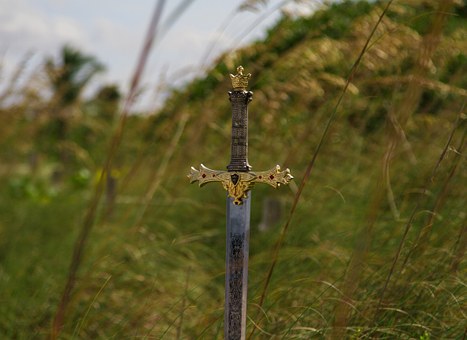by Brian Edward Rise
The “Annals of Wales.” Latin history from the 10th century which follows the Historia Brittonum in the main body and compiled from previous chronicles, mostly Irish, and alludes to Arthur twice. It takes the form of a table spanning 533 years. Events are written next to some of the dates starting with a “Year One” at 447 CE. The first British entry is at Year 72 (approx. 518 CE). It makes note of, “the battle of Badon, in which Arthur carried the cross of Our Lord Jesus Christ for three days and three nights on his shoulders, and the British were victors.”



